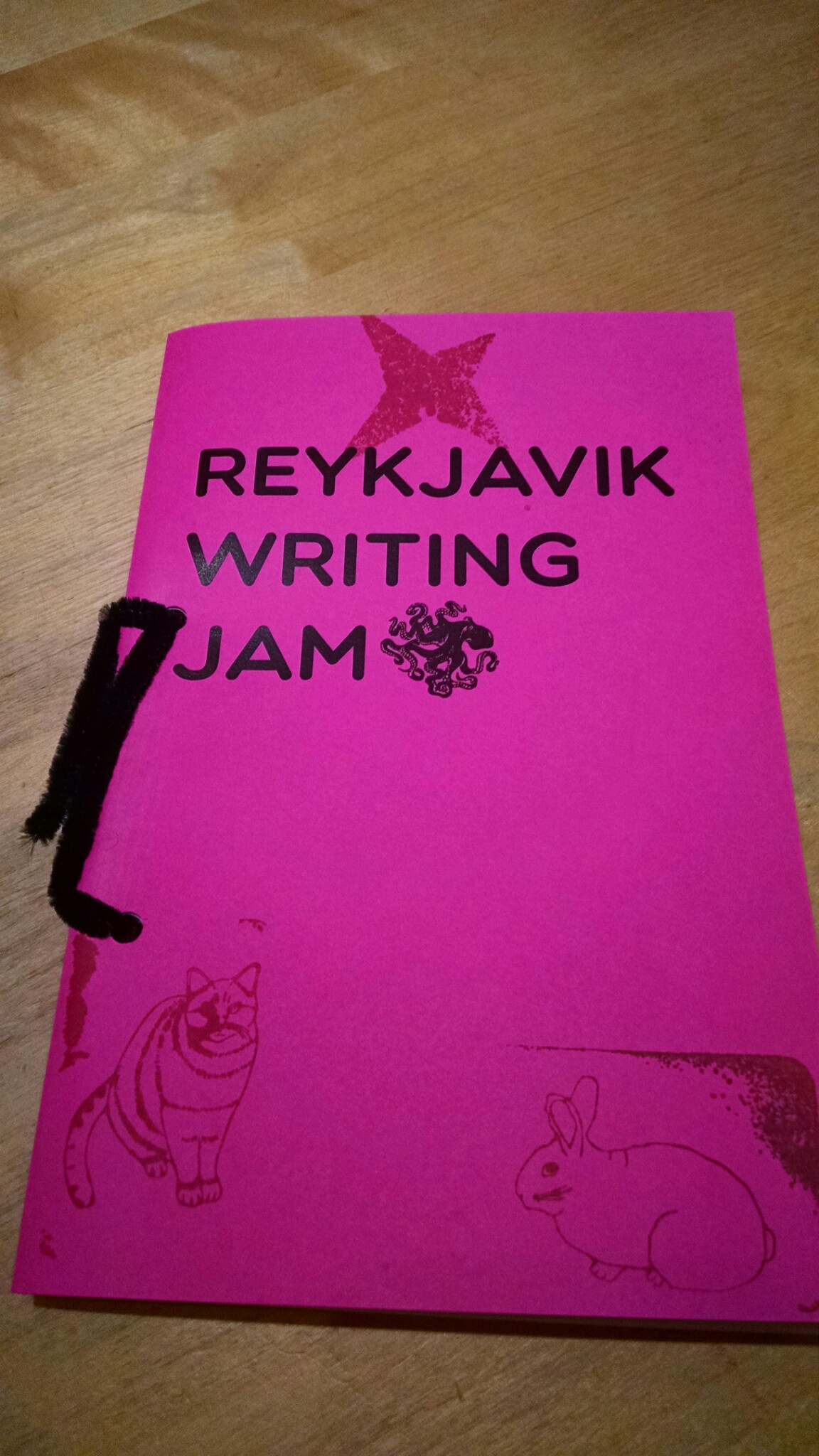 I took a Reykjavík city break last weekend without ever leaving Seattle, thanks to the Taste of Iceland event sponsored by Iceland Naturally and KEXP (among others). After visiting the Odin’s Eye exhibit at the Nordic Heritage Museum, the next item on my itinerary was the Reykjavik Writing Jam.
I took a Reykjavík city break last weekend without ever leaving Seattle, thanks to the Taste of Iceland event sponsored by Iceland Naturally and KEXP (among others). After visiting the Odin’s Eye exhibit at the Nordic Heritage Museum, the next item on my itinerary was the Reykjavik Writing Jam.
E followed an almost hidden stairway at the back of the Elliott Bay Bookstore Cafe to a reading room. There I took a seat and eavesdropped on the conversations around me.
“I’m so interested in Icelandic culture, and the music coming out of Iceland – Sigur Roe and Byork.”
Introduction
The event was introduced by a song, complete with ukulele and kazoo. It was performed by Ryan Boudinot and Rebecca Brinson. They are the pair behind Seattle’s push to join Reykjavík as a UNESCO City of Literature. They rhymed “Sherman Alexie” with “sexy,” thus establishing the event as one of the highest literary caliber, and a safe place for literary experimentation.
{2018 Update: Well, that paragraph reads differently today.}
Prompted Writing
Some months ago, my friend (so to speak) local poet and YA author Karen Finneyfrock, and Icelandic musician, publisher and novelist Bragi Ólafsson (whose book, The Pets, frustrated me terribly) each developed a character sketch that they sent to the other. Each was to write a short story incorporating both of the characters.
Finneyfrock’s character was a young woman who studies crows – and hears voices.
Bragi’s character was a rich, overweight, retired footballer with an ex-wife and two kids.
Both of them, unsurprisingly, wrote really good stories. Finneyfrock read first, prefacing her reading with the comment that it was an honor to share a stage with Bragi, whose old band, The Sugarcubes, had contributed to her adolescent sense of superior cool when she was young and dressed in black.
Finneyfrock’s Story
She told a ghost story, in which the voices her protagonist heard were those of the recently departed. In this case, the voice belonged to the ghost of a retired athlete who had died just that day and blown in from far away. It was a beautifully crafted story. Punctuated by facts about crows, it peeled back the layers of the narrator’s mental illness/ESP and directly addressed the listener, thus drawing her into complicity with the narrator’s worldview. I heard a voice in my own head as she finished. It said,
I like you Stuart. You’re not like all the other people here.
But instead of a funny reference to a trailer park, it was a creepy allusion to an insane asylum.
Bragi’s Story
Bragi prefaced his reading with an apology. He said that he must have subconsciously felt his story must be long to justify the length of the flight to Seattle. Then he began to read
To go prefacing things is as bad as to begin by apologizing. I never apologize for anything.
Bragi, too, had chosen to write from the perspective of Finneyfrock’s young woman, another first for him. In his story, the girl was an unwilling resident of Iceland, returned to the land of her birth by her professorial parents. As she walks along the bike path near Nautholsvik (the same trail, I believe, that Sarah Moss rode to work each day in her memoir Names for the Sea), she witnesses a man dropping dead in the middle of giving directions to tourists. Of course, the man is Bragi’s retired soccer player, and his ghost immediately begins speaking to the narrator.
Compare and Contrast
It was a delight to hear the two characters developed with such unique and different voices. Finneyfrock’s youth was confessional and emotional, and full of facts about crows gleaned from her own observation. She was also nonlinear in the sense that she kept returning to unresolved issues in her own life (the reason she got kicked out of school). Bragi’s young girl was well-read and referential (a very Icelandic trait, dear to my heart), full of facts about birds and books. She was also nonlinear in the sense that she was very concerned not to give anything away before the ground was well-laid.
And yet the stories shared so many similarities! Both authors decided it would be more interesting to inhabit the mind of an unstable youth than a post-peak athlete (perhaps less surprising once put in those words) and both decided the voices should be ghosts – even the same ghost.
Both authors jumped on Hans Már’s obesity and hypertension from the character sketch, and saw his death as inevitable. Yet his divorce and two children were only obliquely referenced in both stories. I would have thought a parental relationship the most obvious choice for the two characters and made the unstable girl one of those two children.
Lesson Learned
The similarities in their stories fascinate me. Let me be clear; I am as inclined to occult explanations as Bragi’s narrator, having gotten that out of my system when I was a black-clad teen like Finneyfrock. To me, the message was that given the same resources, any good storyteller would know what to build. My focus of late is on plot (thanks to Finneyfrock). But the other lesson from the Reykjavik Writing Jam is, every storyteller’s voice is unique and is the defining characteristic of their story. Even if there is a “right answer” to its contents.
Moral: You don’t have to invent the wheel to write a good story. You just have to spin it your own way.
Click here to read my final Taste of Iceland Post about the Reykjavik Calling concert at Neumos.








About the author